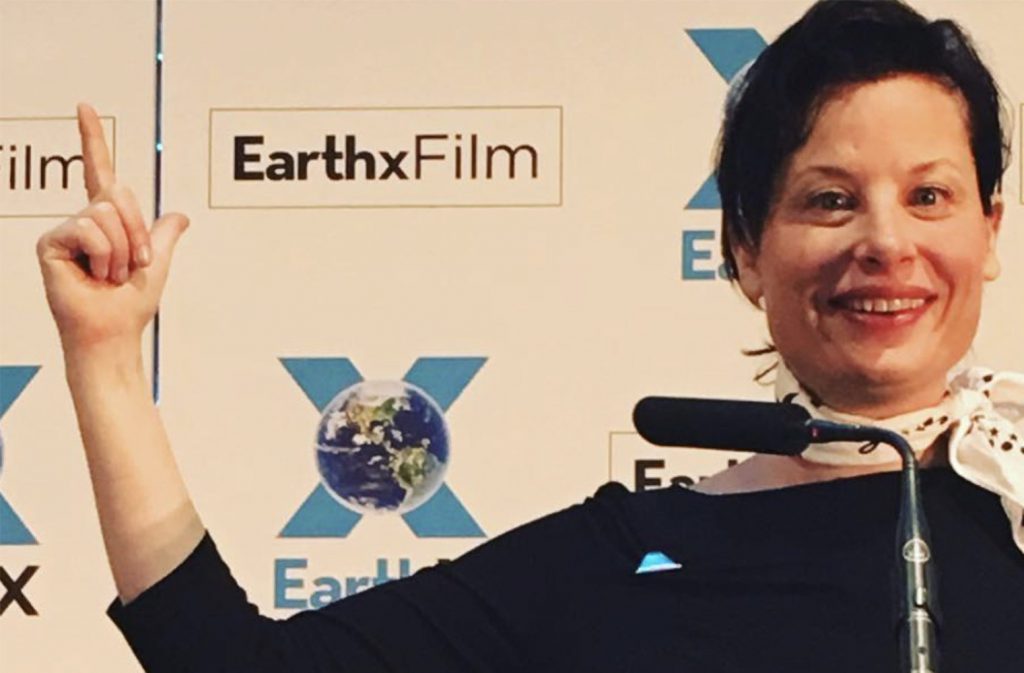
On Earth day at EarthX April 22nd, 2018 I was delighted to unveil the beginning of new project entiteled PlanktonSource in collaboration Plankton Planet scientists and Tara Expeditions which I am very passionate about.
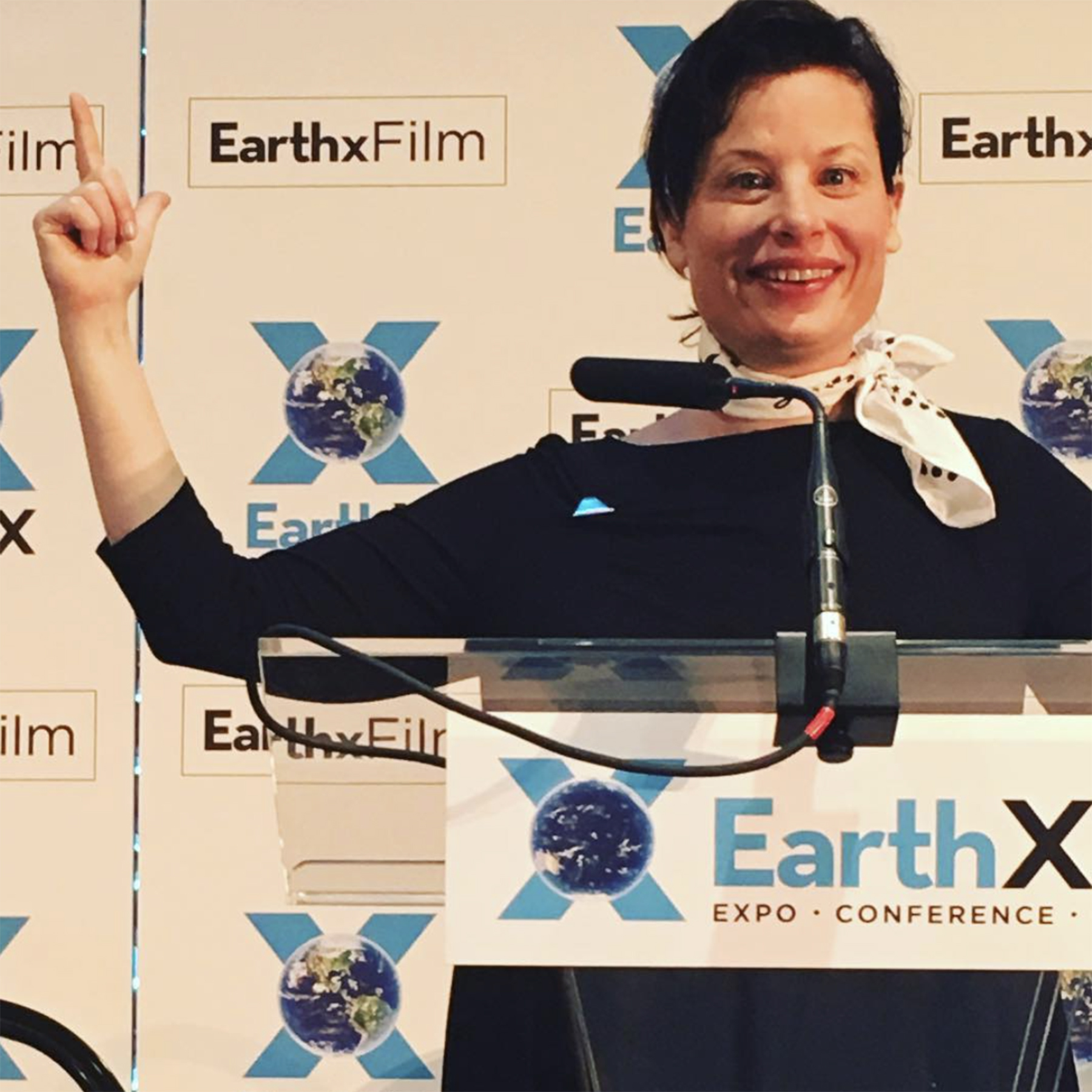
We are at a cross roads in our planet’s evolutionary history, as a science-based artist, I constantly ask myself “what can I do at this crucial moment?” My answer is to create a tool, PlanktonSource, which would influence the cultural evolution of our species, a perfect marriage between art and science. ThePlanktonSource will be based on the shapes of microscopic marine organisms. This data bank of forms would record shapes and scientifically categorize them from the oceans planktonic and genomic data.PlanktonSource would streamline a methodology for scanning, cleaning up and organizing plankton morphology into three-dimensional downloadable files. This would create an accurate rendering which would depict the internal skeletal structure of the organisms, as well as their tissues and chemical composition. It is vital to record these shapes and their composition as entire planktonic ecosystems are dying due to anthropogenic climate change worldwide at an accelerated rate.
PlanktonSource would operate much like a digital seed bank, preserving knowledge about these vital microscopic forms for future generations. Specifically, PlanktonSource would begin with protists specimens, single celled plankton. In addition to pure science, there are limitless ways this data based could be used, now and in the future. To name a few, PlanktonSource could be used for educational purposes, architecture, engineering, fine art, decorative art, virtual reality, medicine, and finally green energy research like bio-fuels.
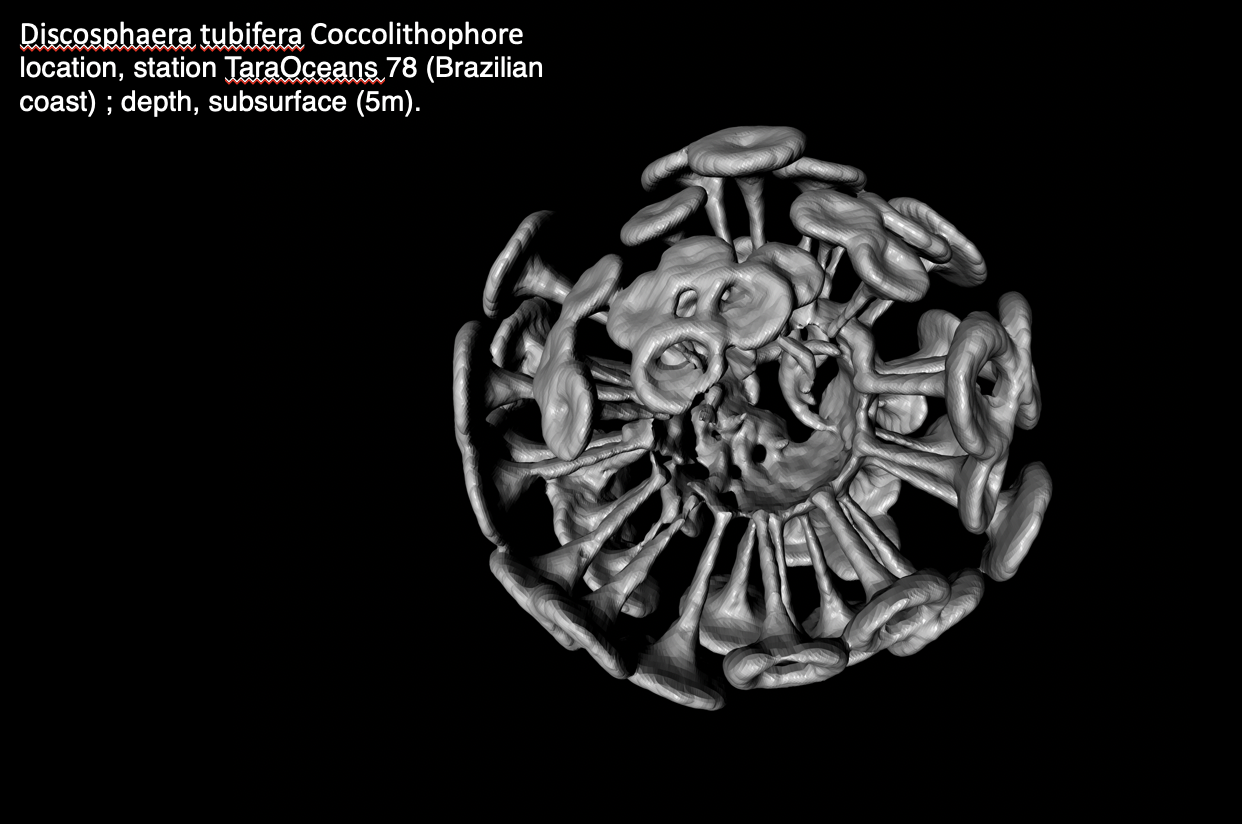
Above Image of Digitally Scanned Plankton Care of Sebastain Colin of Roscoff Station CRNS France
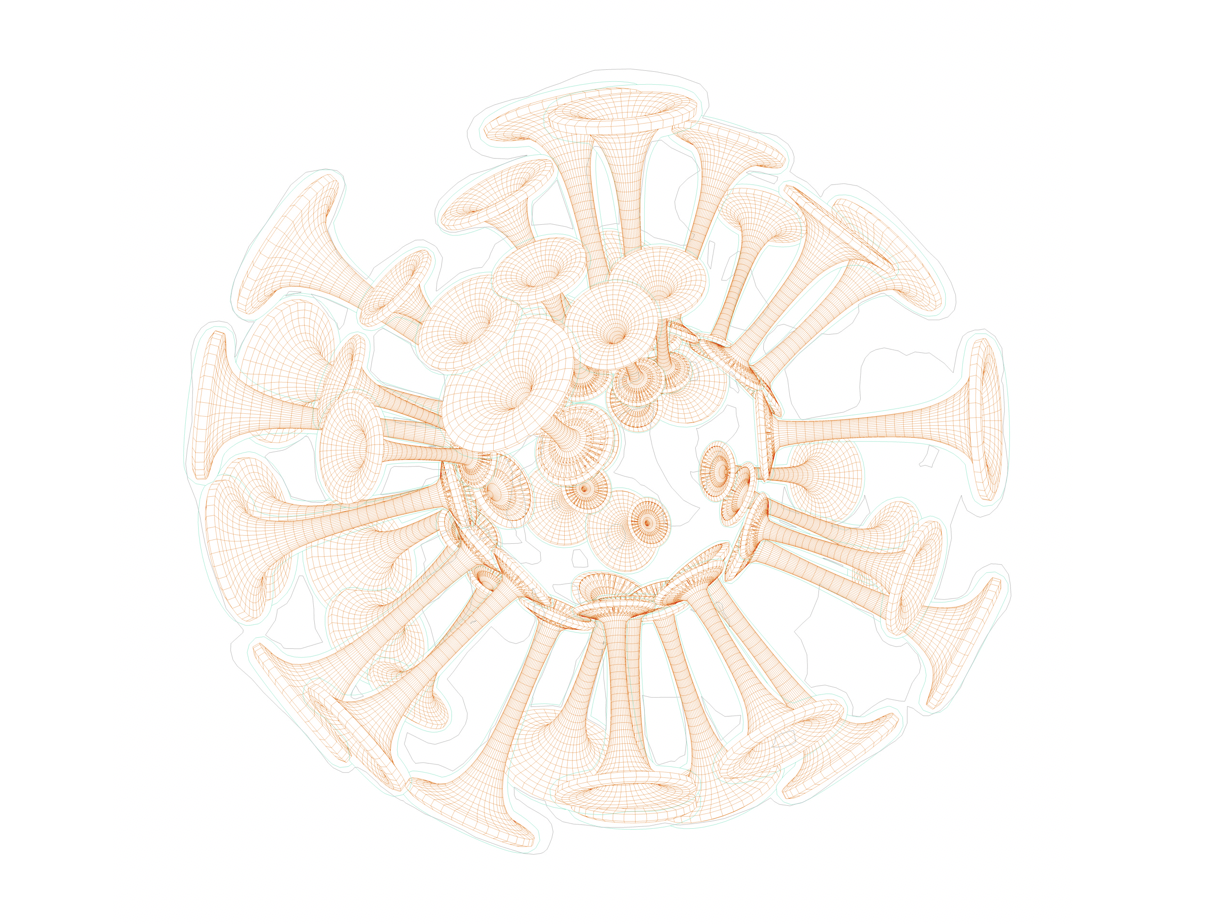
Above Image Created from 3D Scan of Coccolitophore Skleton 2018
We depend on plankton which creates up to 50% of the world’s oxygen, sequesters carbon dioxide to the ocean floor, and is the basic building block of the oceanic food chain. There is a historical precedent of microscopic visualizations of protists playing a pivotal role in scientific acceptance and understanding. Darwin first published “On the Origin of Species” in 1859; however, the theory of evolution was not widely accepted until a German scientist and artist, Ernst Heinrich Haeckel (1834-1919), helped people visualize it. His renditions of the microscopic world furthered the European acceptance of Darwinism because of the combination of his philosophy of the continuity of all life* and his famous illustrations of oceanic protists. Now, a century later, our survival as a species depends on a cultural shift which can only occur through understanding of how natural systems work.
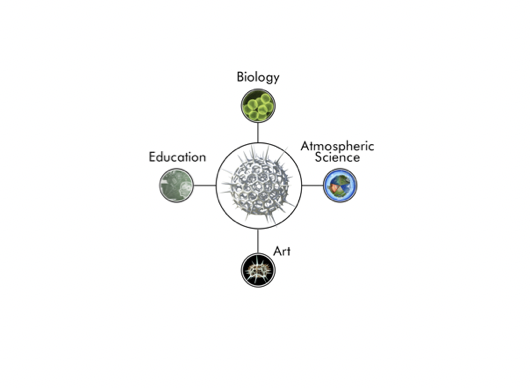
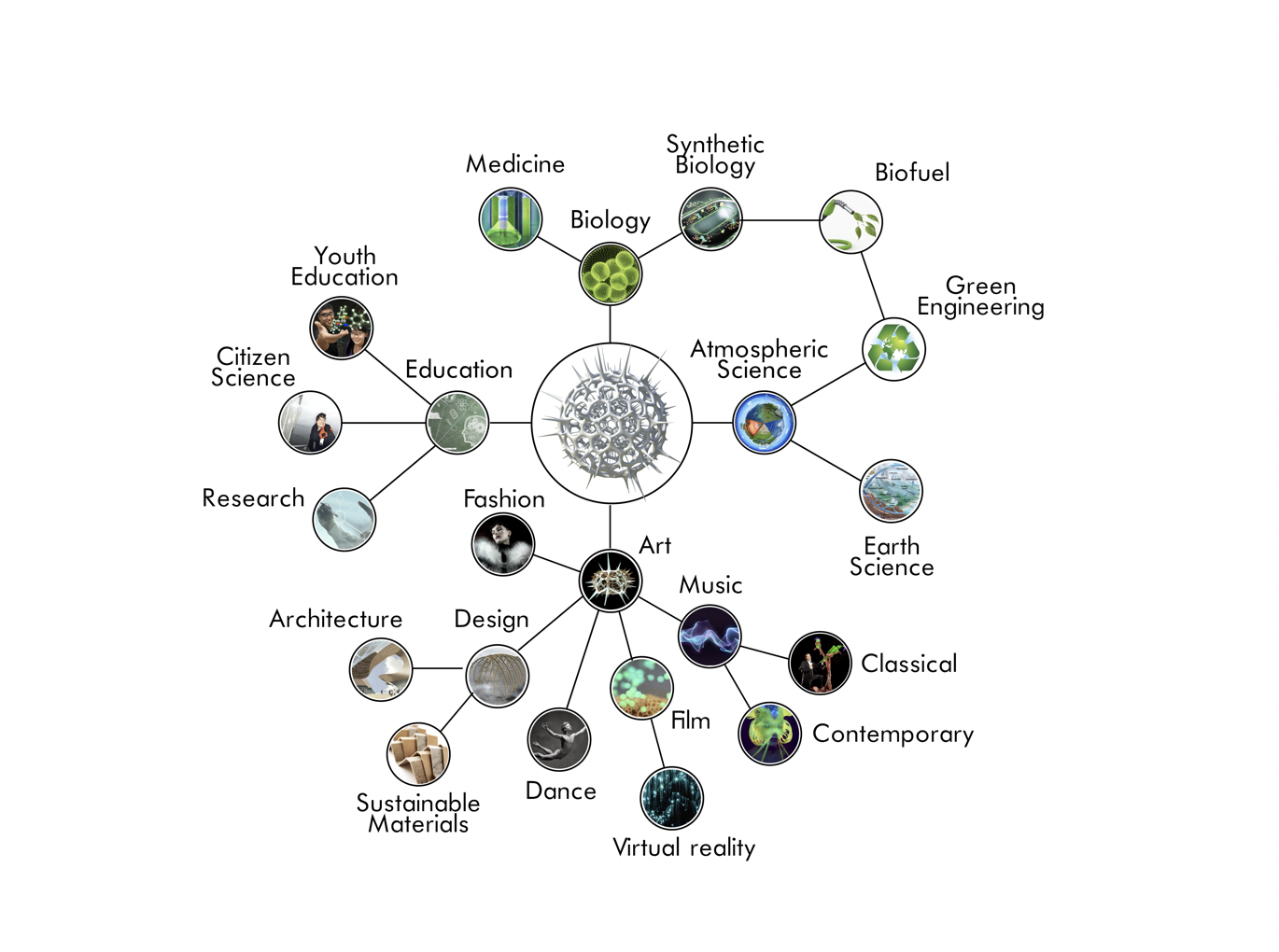
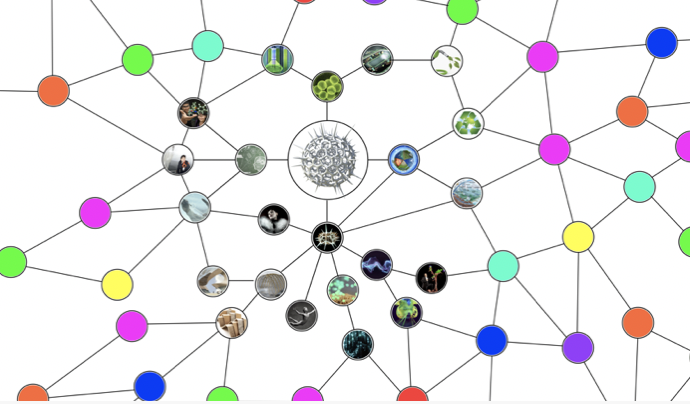
* Haeckel’s method of visualizing and categorizing protists, which he found in the Mediterranean Bay of Villefranche Sur La Mer, home to the famous Villefranche Sur La Mer Biological Institute, is still the basis for how species of all phylum are categorized to this day. Haeckel’s illustrations influenced interior decor and even architecture at the turn of the century. For example, the entrance to the World Fair of 1900 built by architect Rene Binet, when the Eiffel Tower was built, was inspired by a single celled plankton.